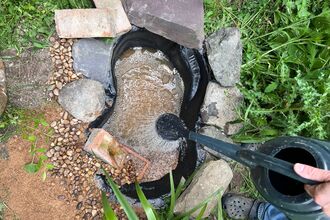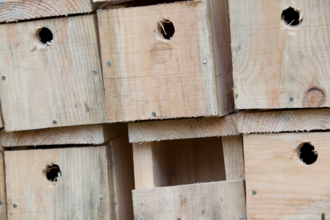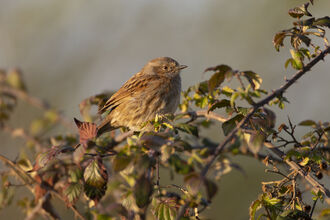House sparrows have declined by almost 70% in recent decades.
In spring 2025, hundreds of you surveyed sparrows in your gardens, helping us to understand more about the types of areas where this declining species is found, and why this might be.
We found that certain garden features were associated with higher house sparrow numbers, and we're encouraging you to add these into your garden.
In addition to leaving as much natural habitat as possible, you can help sparrows with the following:
People who saw the highest numbers of house sparrows in their gardens had one, or all, of the above features.
We know not everyone has the space to create ponds, so you could always opt for a mini-pond. Please ensure when you're providing bird feed that you clean and maintain your feeders.
Pledge to help house sparrows
Let us know you'll be adding house sparrow-friendly features to your garden and plot them on our map below.
Layers

We stock a range of bird feed, bird feeders and nest boxes suitable for house sparrows in our Nature Discovery Centres.
Help another Nature Neighbour:
House sparrow FAQs
What’s the difference between a house sparrow and a tree sparrow?
Tree sparrows are smaller and slimmer than house sparrows, with a chestnut cap and a distinct black spot on their white cheeks (not present in house sparrows). Tree sparrows frequent rural gardens and farmland edges, and they are rare in urban gardens. More tips on identifying small brown birds can be found here.
What do house sparrows eat?
House sparrows are omnivores and opportunistic, eating insects, fruits, seeds and food scraps whenever possible. Recently, our House Sparrow Project results showed that house sparrows are more abundant in gardens with bird feeders, regardless of the type of feed.
Where do house sparrows go in winter?
House sparrows don’t migrate, so they will remain in their typical urban/suburban environment. They will particularly benefit from accessing supplementary food and shelter in your garden throughout the colder months.
Why don’t you see as many house sparrows these days?
House sparrows are on the Red List of Birds of Conservation Concern in the UK, and have been since 2002. The reasons for their decline are unclear, with habitat loss suggested as a major factor. They are protected, as it is illegal to intentionally kill, injure or harm house sparrow or destroy their nests under the Wildlife and Countryside Act 1981.
What's the House Sparrow Project?
In spring 2025, hundreds of people in Essex surveyed their gardens for house sparrows. Through these observations, we have been able to identify key features of gardens and properties that are linked to higher house sparrow abundance and breeding. You can read the full results here.





